CONTENTS
Guide
Australia HarperCollins Publishers Australia Pty. Ltd. Level 13, 201 Elizabeth Street Sydney, NSW 2000, Australia www.harpercollins.com.au
Canada HarperCollins Canada 2 Bloor Street East - 20th Floor Toronto, ON M4W 1A8, Canada www.harpercollins.ca
New Zealand HarperCollins Publishers New Zealand Unit D1, 63 Apollo Drive Rosedale 0632 Auckland, New Zealand www.harpercollins.co.nz
United Kingdom HarperCollins Publishers Ltd. 1 London Bridge Street London SE1 9GF, UK www.harpercollins.co.uk
United States HarperCollins Publishers Inc. 195 Broadway New York, NY 10007 www.harpercollins.com
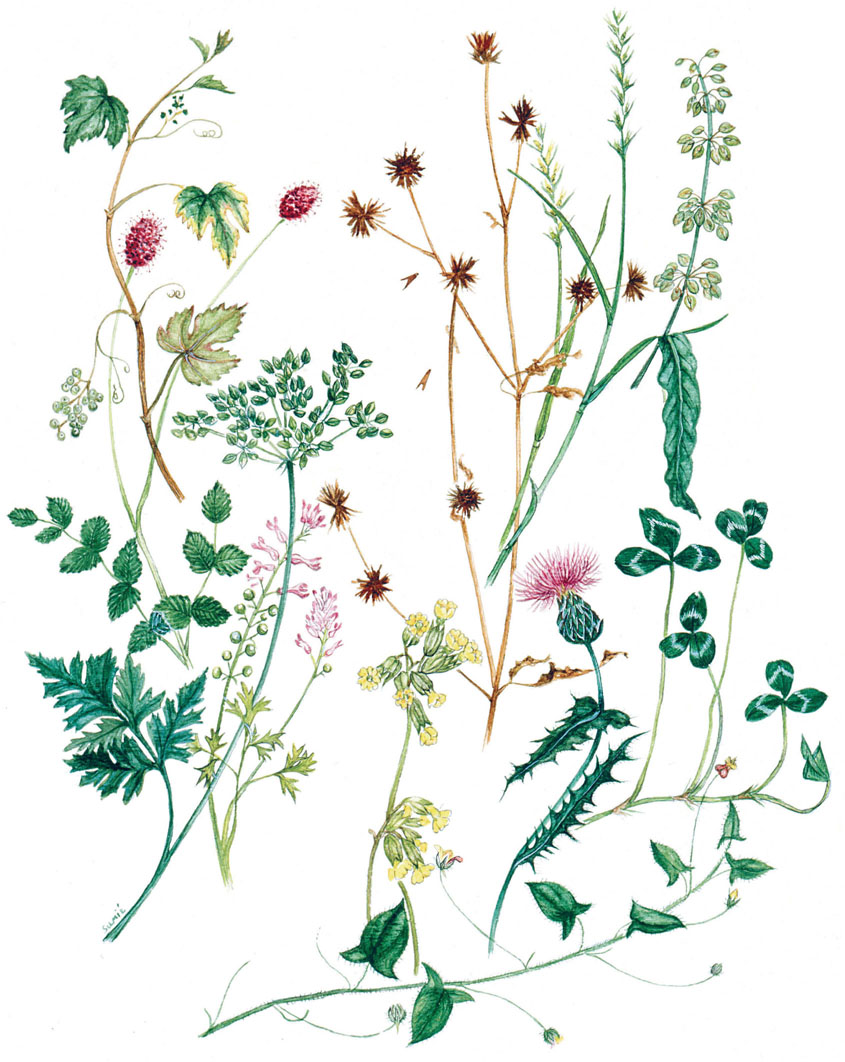
BURGUNDY, Henry V [Act V, sc. 2] To Allison Kyle Leopold for her unflagging mentorship and friendship [and launch into garden writing] and Elose Watt for creating the Shakespeare Workout, a gym for the universe of verse, and playground for Shakespeare geeks galore
Gerit Quealy To Simon, Brad, Sharon, Adam, and Fred for all their help and support
Sumi Hasegawa-Collins
BOTANICAL SHAKESPEARE.
Copyright 2017 by Gerit Quealy. Foreword 2017 by Helen Mirren. All rights reserved under International and Pan-American Copyright Conventions. By payment of the required fees, you have been granted the nonexclusive, nontransferable right to access and read the text of this e-book on-screen. No part of this text may be reproduced, transmitted, downloaded, decompiled, reverse-engineered, or stored in or introduced into any information storage and retrieval system, in any form or by any means, whether electronic or mechanical, now known or hereafter invented, without the express written permission of HarperCollins e-books. Published in 2017 by Harper Design An Imprint of HarperCollinsPublishers 195 Broadway New York, NY 10007 Tel: [212] 207-7000 Fax: [855] 746-6023 harperdesign@harpercollins.com www.hc.com Distributed throughout the world by HarperCollins Publishers 195 Broadway New York, NY 10007 ISBN 978-0-06-246989-2 EPub Edition April 2017 ISBN 9780062469908 Library of Congress Control Number 2016951429 Yet Nature is made better by no mean But Nature makes that mean: so, over that Art Which you say adds to Nature, is an Art That Nature makes.
You see, sweet maid, we marry A gentler scion to the wildest stock, And make conceive a bark of baser kind By bud of nobler race: this is an Art Which does mend Nature, change it rather, but The ART itself is NATURE. Winters Tale [Act IV, Scene 4] 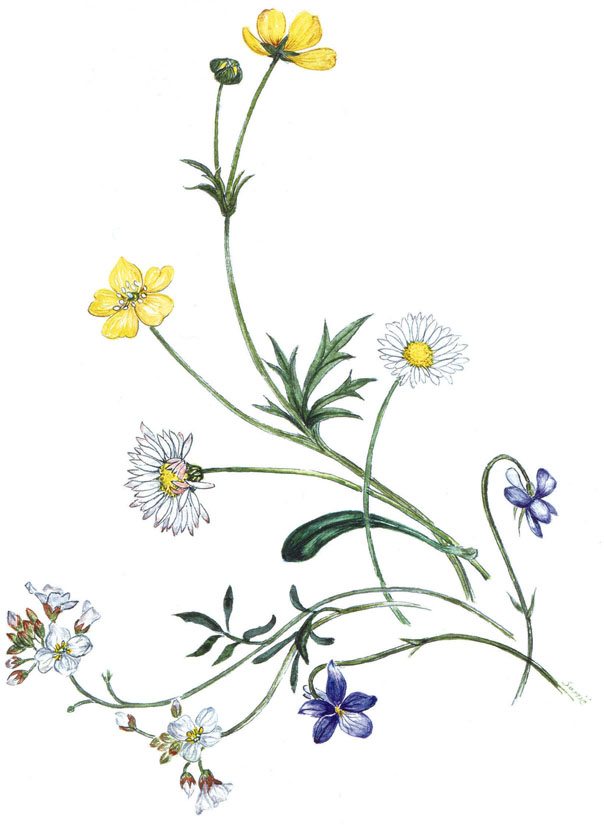 SONG OF SPRING, Loves Labours Lost [Act V, sc. 2]
SONG OF SPRING, Loves Labours Lost [Act V, sc. 2] 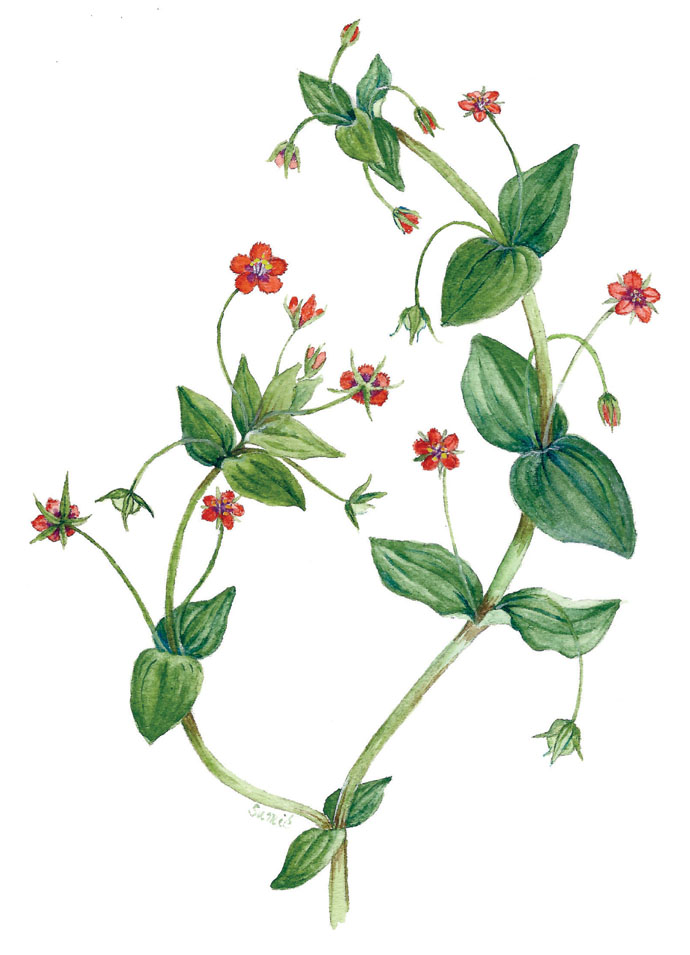
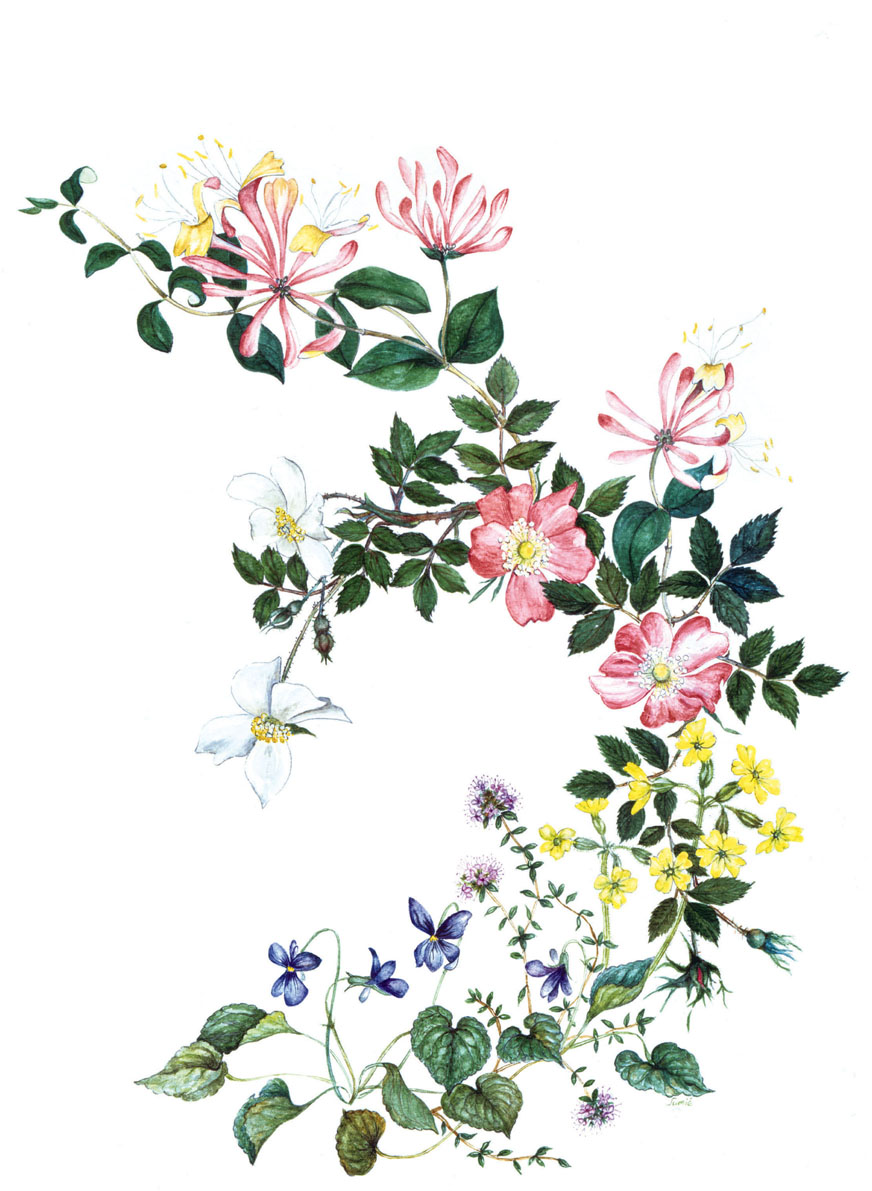 OBERON, A Midsummer Nights Dream [Act II, sc. 1] This graceful volume is the marriage of Shakespeares words about plants and the plants themselves. It beautifully combines my love of Shakespeare and of gardening. Seeing what each plant looks like, their faces if you will, is fascinating, and incredibly helpful, especially with the more obscure ones.
OBERON, A Midsummer Nights Dream [Act II, sc. 1] This graceful volume is the marriage of Shakespeares words about plants and the plants themselves. It beautifully combines my love of Shakespeare and of gardening. Seeing what each plant looks like, their faces if you will, is fascinating, and incredibly helpful, especially with the more obscure ones.
My penchant for gardening came during my time with the Royal Shakespeare Company in Stratfordthe physicality of the material and the material world of plants sort of converged. There I developed a passion for the countrysidethe gold and green of the landscape, the changing colours and textures of the seasons, the scent of damp earth and pungent wildflowers. Its the experience of each that provides the thrill: getting your hands dirty, diving down to the root of it all, finding the real joy of growth. Joys soul lies in the doing, says Shakespeares Cressida, and its true. Nature has become a passion and a tonic for me so finding a way to keep it close is a priority [I even made a garden outside my trailer in Lithuania while shooting Elizabeth I]. It satisfies what I call my appetite for solitude.
How delightful then that this elegant book contains all of Shakespeares words about plants beside exquisite drawings of the plants themselves. You can sit with it in solitude and have a direct experience of each plant. You can almost touch or smell each one. Maybe it will make you want to do thatfeel the spiky thorns of the rose or the fuzzy heads of burdock. I hope so. I love the fact that the olives I grow in my garden appear in six different plays, plus a sonnet [107]: Peace proclaims Olives of endless age.
Helen Mirren 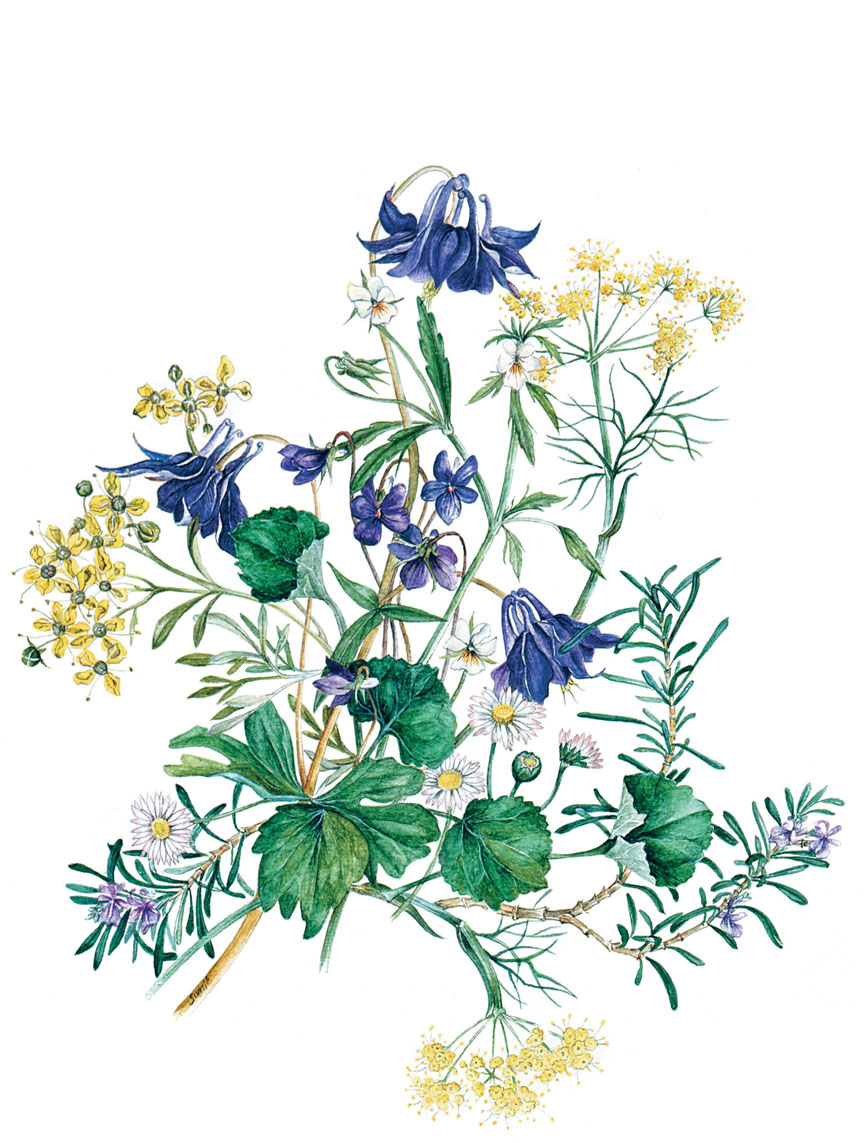 OPHELIA, Hamlet [Act IV, sc. 5] He will work you any Flower to the life, as like itas if it grew in the very place;and being a delicate perfumerhe will give it you his perfect and natural Savour. from Sir Gyles Goosecappe, by George Chapman Lawyers claim Shakespeare was a lawyer, doctors think he was medically trained, actors assume he was a thespian, soldiers, sailors, and astronomers all claim a kindred spirit. So it should be no surprise that knowledgeable gardeners think the Bards extensive use of botanical references would qualify him as a Master Gardener. Playwright Ben Jonson, Shakespeares eulogist of sorts, said he was not of an Age, but for all Time. He might have added, for all professions. Bens 1623 prognostication proved true enoughthe immortal Bards work and wit are probably more popular and pored over than those of any other writer throughout history.
OPHELIA, Hamlet [Act IV, sc. 5] He will work you any Flower to the life, as like itas if it grew in the very place;and being a delicate perfumerhe will give it you his perfect and natural Savour. from Sir Gyles Goosecappe, by George Chapman Lawyers claim Shakespeare was a lawyer, doctors think he was medically trained, actors assume he was a thespian, soldiers, sailors, and astronomers all claim a kindred spirit. So it should be no surprise that knowledgeable gardeners think the Bards extensive use of botanical references would qualify him as a Master Gardener. Playwright Ben Jonson, Shakespeares eulogist of sorts, said he was not of an Age, but for all Time. He might have added, for all professions. Bens 1623 prognostication proved true enoughthe immortal Bards work and wit are probably more popular and pored over than those of any other writer throughout history.
Just as Shakespeares words have fallen on fertile ground, so are they fertile ground themselves for a bounty of botany. Professional horticulturalists, gardening hobbyists, and nature lovers in general all share a fascination for the vast array of flowers, fruits, grains, grasses, seeds and weeds, plants and trees, herbs, spices, and vegetables sprouting in Shakespeares plays and sonnetsroughly 175 specific mentions, with even more general references and commentary on planting, pruning, growing, grafting, weeding, seeding, folklore galore, and tributes, naturally: ... tongues in trees, books in the running brooks,Sermons in stones and good in every thing Even the sinister side of plantsdangerous poisons, painful nettles and thorns, or the threatening approach of Birnam Woodholds thrall. I will not be afraid of death and bane,Till Birnam forest come to Dunsinane. Casual mentions of plants are interlaced everywhere; the bane tucked in the above quotation is a succinct rhyme but also no doubt a truncated version of either Wolfsbane or Henbane, deadly poisons perfectly at home in the dark world that is Macbeth. THERE WAS SOMETHING ABOUT ELIZABETH... Perhaps this fertile ground owes more to the reign of Elizabeth than to anything else. Her ascension to the throne in 1558 marked a sort of steadying of the severe pendulum swings put in motion by her father, Henry VIII, when he broke with the church in Rome.
That shock was still reverberating through the populace when first the Evangelion Edward VI, then his Catholic sister, who became known as Bloody Mary, succeeded in stretching the country to the extremes of religious fervor. The highly educated, peaceable, and pleasure-loving Elizabeth stayed that pendulum insomuch as she could. She seeded England with a passion for learning; poetry fused with the classics flourished, and the new entertainment of plays. Publishing went into overdrive, first with translations of popular material from Europe, which included botany books, then with homegrown versions in just about every genre. Which is why this era is known as the Early Modern period, because it is essentially the community from which our current society springs. In short, she created a culture in which investigation, discovery, experimentation, and creativity blossomed.

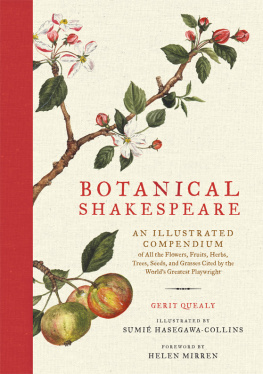

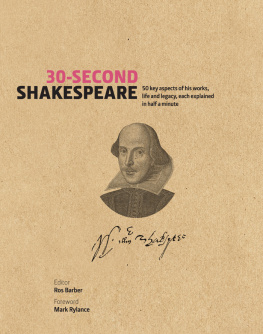



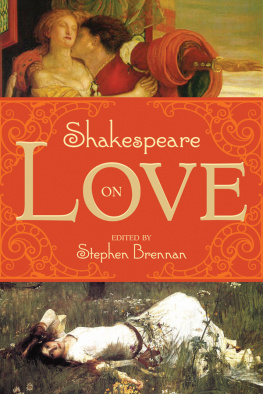
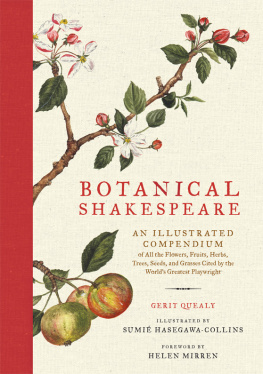



 BURGUNDY, Henry V [Act V, sc. 2] To Allison Kyle Leopold for her unflagging mentorship and friendship [and launch into garden writing] and Elose Watt for creating the Shakespeare Workout, a gym for the universe of verse, and playground for Shakespeare geeks galore Gerit Quealy To Simon, Brad, Sharon, Adam, and Fred for all their help and support Sumi Hasegawa-Collins
BURGUNDY, Henry V [Act V, sc. 2] To Allison Kyle Leopold for her unflagging mentorship and friendship [and launch into garden writing] and Elose Watt for creating the Shakespeare Workout, a gym for the universe of verse, and playground for Shakespeare geeks galore Gerit Quealy To Simon, Brad, Sharon, Adam, and Fred for all their help and support Sumi Hasegawa-Collins
 BOTANICAL SHAKESPEARE.
BOTANICAL SHAKESPEARE.  SONG OF SPRING, Loves Labours Lost [Act V, sc. 2]
SONG OF SPRING, Loves Labours Lost [Act V, sc. 2] 
 OBERON, A Midsummer Nights Dream [Act II, sc. 1] This graceful volume is the marriage of Shakespeares words about plants and the plants themselves. It beautifully combines my love of Shakespeare and of gardening. Seeing what each plant looks like, their faces if you will, is fascinating, and incredibly helpful, especially with the more obscure ones.
OBERON, A Midsummer Nights Dream [Act II, sc. 1] This graceful volume is the marriage of Shakespeares words about plants and the plants themselves. It beautifully combines my love of Shakespeare and of gardening. Seeing what each plant looks like, their faces if you will, is fascinating, and incredibly helpful, especially with the more obscure ones. OPHELIA, Hamlet [Act IV, sc. 5] He will work you any Flower to the life, as like itas if it grew in the very place;and being a delicate perfumerhe will give it you his perfect and natural Savour. from Sir Gyles Goosecappe, by George Chapman Lawyers claim Shakespeare was a lawyer, doctors think he was medically trained, actors assume he was a thespian, soldiers, sailors, and astronomers all claim a kindred spirit. So it should be no surprise that knowledgeable gardeners think the Bards extensive use of botanical references would qualify him as a Master Gardener. Playwright Ben Jonson, Shakespeares eulogist of sorts, said he was not of an Age, but for all Time. He might have added, for all professions. Bens 1623 prognostication proved true enoughthe immortal Bards work and wit are probably more popular and pored over than those of any other writer throughout history.
OPHELIA, Hamlet [Act IV, sc. 5] He will work you any Flower to the life, as like itas if it grew in the very place;and being a delicate perfumerhe will give it you his perfect and natural Savour. from Sir Gyles Goosecappe, by George Chapman Lawyers claim Shakespeare was a lawyer, doctors think he was medically trained, actors assume he was a thespian, soldiers, sailors, and astronomers all claim a kindred spirit. So it should be no surprise that knowledgeable gardeners think the Bards extensive use of botanical references would qualify him as a Master Gardener. Playwright Ben Jonson, Shakespeares eulogist of sorts, said he was not of an Age, but for all Time. He might have added, for all professions. Bens 1623 prognostication proved true enoughthe immortal Bards work and wit are probably more popular and pored over than those of any other writer throughout history.